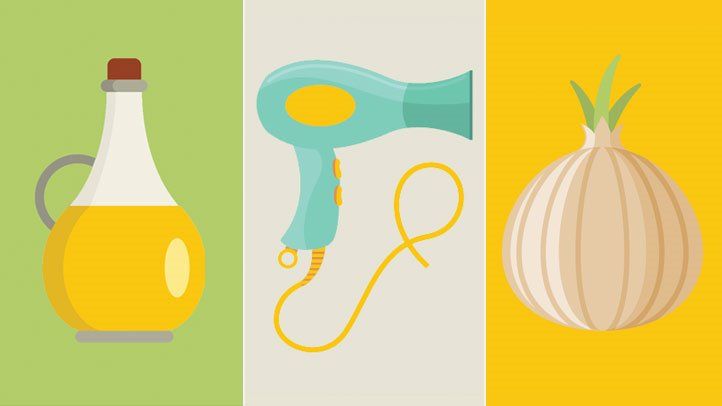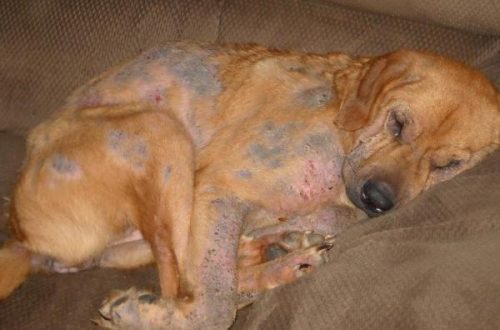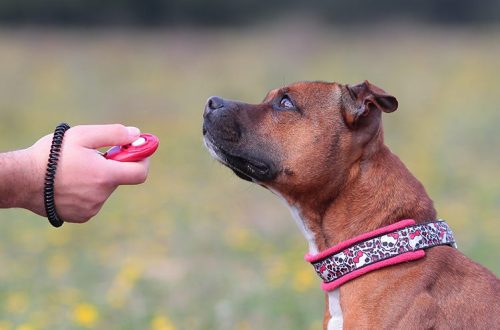
How to treat ears at home?

Contents
Signs of ear disease
The main symptom is discharge from the ears, which can be unilateral or bilateral. Also, there is redness of the auricle and ear canal, soreness, sometimes tilting the head towards the diseased ear, itching, unpleasant smell from the ears, complete or partial loss of hearing, impaired coordination of movements. The discharge can be of a very different nature – be purulent, bloody, dark brown, whitish, greasy and smearing, or it can be almost dry small crusts that will look like coffee grounds. The dog may scratch his ears and shake his head or even refuse to touch his head.
Types of diseases
The dog’s ear consists of the auricle, external auditory canal, middle ear, and inner ear. The middle ear is separated from the external auditory canal by the tympanic membrane and contains the auditory ossicles and the tympanic cavity. The inner ear consists of a bony labyrinth that contains the auditory nerves and the vestibular apparatus.
Accordingly, dogs have the following diseases:
- Diseases of the auricle directly;
- Otitis externa (inflammation of the external auditory canal);
- Otitis media (inflammation of the middle ear);
- Otitis media (inflammation of the inner ear).
So what is the treatment for the ears?
Treatment depends on the cause, and there can be many causes. Moreover, the reasons can be primary, secondary and supporting.
Primary reasons: trauma, atopic dermatitis, food allergies, ear mites, foreign bodies in the form of plants and insects.
Secondary causes or predisposing factors: narrowing of the external auditory canal, increased production of earwax, growths or tumors in the external auditory canal, hair growth in the ear canal, excessive and improper cleaning of the ears.
Supporting factors: these are secondary bacterial and fungal infections, improper treatment, over-treatment (yes, this also happens).
At the same time, for successful treatment, it is important not only to establish the cause, but also to eliminate all supporting factors. Consider an example: a dog was infected with an ear mite in the country, as a result of the activity of the mite, the skin of the external auditory canal became inflamed, which led to a secondary fungal infection. If only the ear mites are treated, the secondary infection will still remain, and the dog will have discharge and bad smell from the ears. If you use only drops, but do not cleanse the ear canal from secretions, then there will be no effect from this, since the drug simply does not get on the skin of the ear canal. If only the ears are cleaned, then the symptoms will recur after a day or two, since the primary causes are not taken under control. It turns out a vicious circle: the owners again and again face problems, the dog gets sick, more and more new medicines are tried, and nothing brings results.
Therefore, it is important not only what to treat, but also how to treat.
In the practice of veterinarians, there are cases when pet owners treat an ear mite infection for years, because they think that going to the clinic is not necessary and you can deal with the problem on your own. As a result, the quality of life of a pet suffers and extra money is spent.
What will the veterinarian do?
Conduct a general clinical examination of the dog and a thorough examination of the ears with an otoscope. Otoscopy allows you to assess the condition of the skin of the ear canal, the integrity of the eardrum, to detect foreign bodies or neoplasms. After that, it will be possible to form a list of preliminary diagnoses and discuss the diagnosis.
The doctor will do an ear mite test (if needed) or a cytology test, a diagnostic test to determine the secondary infection and which organisms are causing it. After that, the doctor will make a diagnosis, select the necessary drug and prescribe a suitable treatment regimen.
In addition, at the reception, the owner will be shown how to properly clean the dog’s ears, what lotion to use and how often. And most importantly, a follow-up date will be scheduled, at which the veterinarian can evaluate the results of the treatment and the primary causes of the disease, especially if it is associated with allergic diseases.
A visit to the clinic, diagnosis and treatment will ultimately cost less than self-treatment or treatment on the advice of friends, and, most importantly, will bring the result – the recovery of the dog.
The article is not a call to action!
For a more detailed study of the problem, we recommend contacting a specialist.
Ask the vet
22 2017 June
Updated: July 6, 2018





